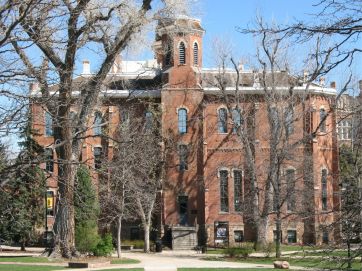CounterCurrent: Week of 8/29
Some things seem so obvious as to be barely worth mentioning. The sky is blue. Grass is green. Dogs bark and cats meow. Race relations in America are far better than they were in the 1950s.
That last one, though, sparks more debate than you might think. Most Americans, especially those outside academe, agree with the commonsense claim that racism has declined in the decades after the civil rights movement. Racial segregation is no more (though, unfortunately, it’s making a comeback in higher education). Public approval for interracial marriage has skyrocketed in the last 60 years. The only lynch mobs we see anymore take the form of angry Twitter users.
In other words, while racism in America is not completely gone—it will always live on through a select few unsavory individuals—it is objectively way less prevalent today than it was in decades and centuries past.
To challenge this widely accepted fact, enter the critical race theorists, the anti-racists, and the 1619ers … let’s just call them the neo-racists for short. Neo-racists see race and racism in everyone everywhere—at all times. Everything (and I mean everything) has to do with race and always has. According to this view, America is as racialized as it ever was, if not more.
To prove this, neo-racists point to slippery academic concepts such as “implicit bias,” “white fragility,” and “structural racism,” all of which help make racism as amorphous and vague as possible. It’s everywhere, but we also can’t detect it without the help of our social science sleuths. But once they find racism, you better agree that it’s there. Why? Because if you don’t, you’re complicit in racism, of course! And no one wants that.
The conflict between these two views makes it difficult to impartially evaluate new research on racism. We don’t want to simply write it off, because it very well may provide valuable insights regarding where racism still exists in American society and what we may do about it. On the other hand, we cannot just accept it all at face value (much to neo-racists’ chagrin), especially since the fields generating it—sociology, anthropology, and education, for example—have been all but totally hollowed out by activism-first, scholarship-second pseudo-researchers.
To help us wade through these murky waters is Wilfred Reilly, assistant professor of political science at Kentucky State University, an academic well-versed in the contemporary literature on racism in America. In his latest article for the National Association of Scholars’ quarterly journal, Academic Questions, Dr. Reilly guides us through the wild world of audit studies, that is, a research method that “test[s] for unequal treatment by having otherwise identical pairs of people who vary on a single trait, such as race or gender, apply for the same sets of opportunities, such as apartment vacancies or job openings.”
In the article, a meta-analysis of sorts, Reilly sorts through various problems that plague audit studies, ultimately concluding that
Some of their results obviously do indicate that bias remains a reality within significant sectors of the U.S. employment and housing markets. However, these studies rarely if ever examine rates of pro-white (or pro-POC) bias in higher education, the public sector, and the minority business community; very frequently do not include adjustments for social class or perceived competence; and have not extensively compared the bias faced by members of other potentially disadvantaged groups with that faced by blacks. Given this, audit data does not seem to counter the basic observation that citizens of different races with the same background characteristics often perform similarly in life. I certainly do hope audit scholars tackle the points made above going forward, perhaps proving this point wrong—and perhaps proving it right.
Dr. Reilly’s article is far too complex to adequately summarize here. I highly recommend that you check out the entire piece, as well as a related article in the same issue by Richard P. Phelps, which examines the dire state of contemporary education research.
We can’t throw the baby out with the bathwater and eschew social science research in its entirety. It remains a valuable tool when conducted with rigor and integrity. But we must also be skeptical of much of the research published today, especially that which is written by those concerned with promoting their own ideological agenda above all else. “My mind is made up. Don’t confuse me with the facts.”
CounterCurrent is the National Association of Scholars’ weekly newsletter, written by Communications & Research Associate David Acevedo. To subscribe, update your email preferences here.













